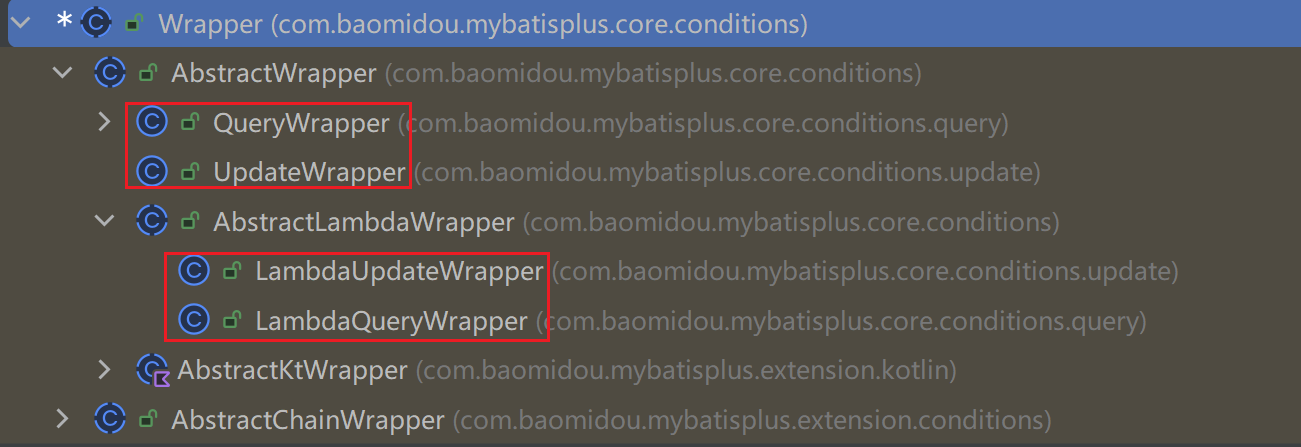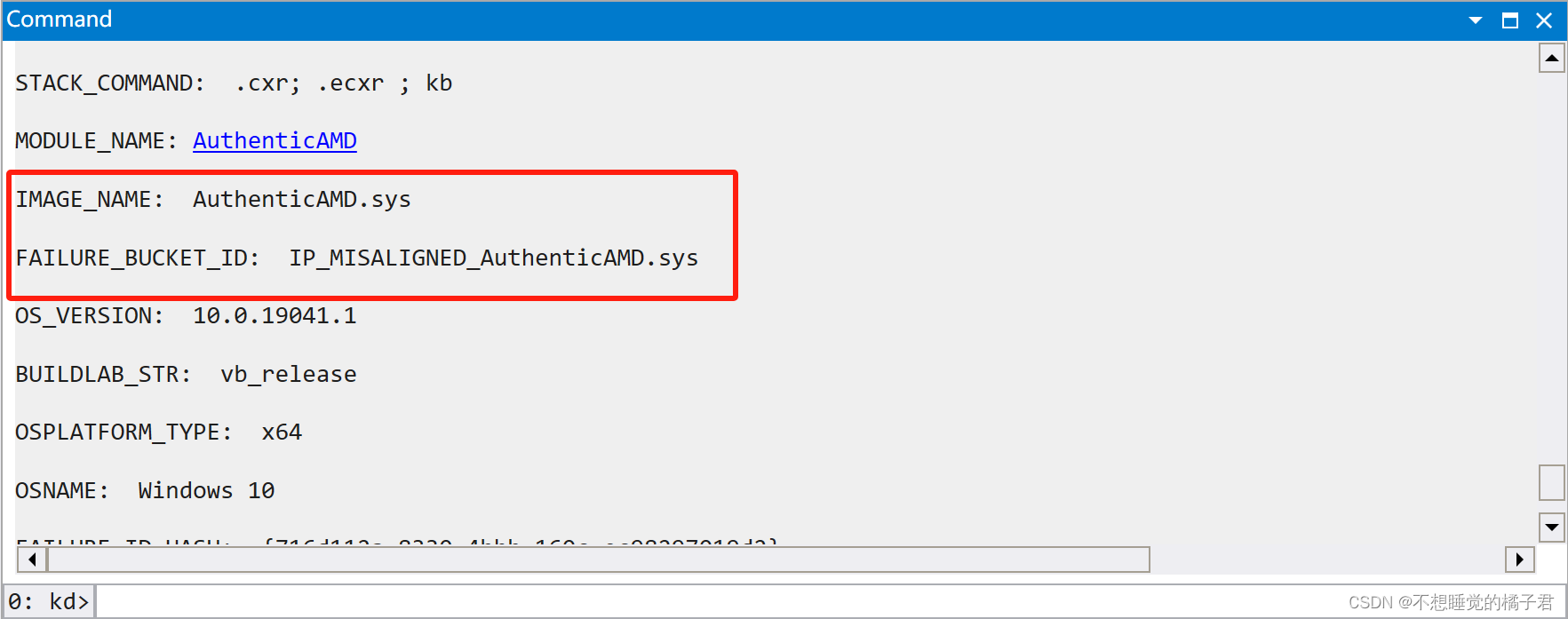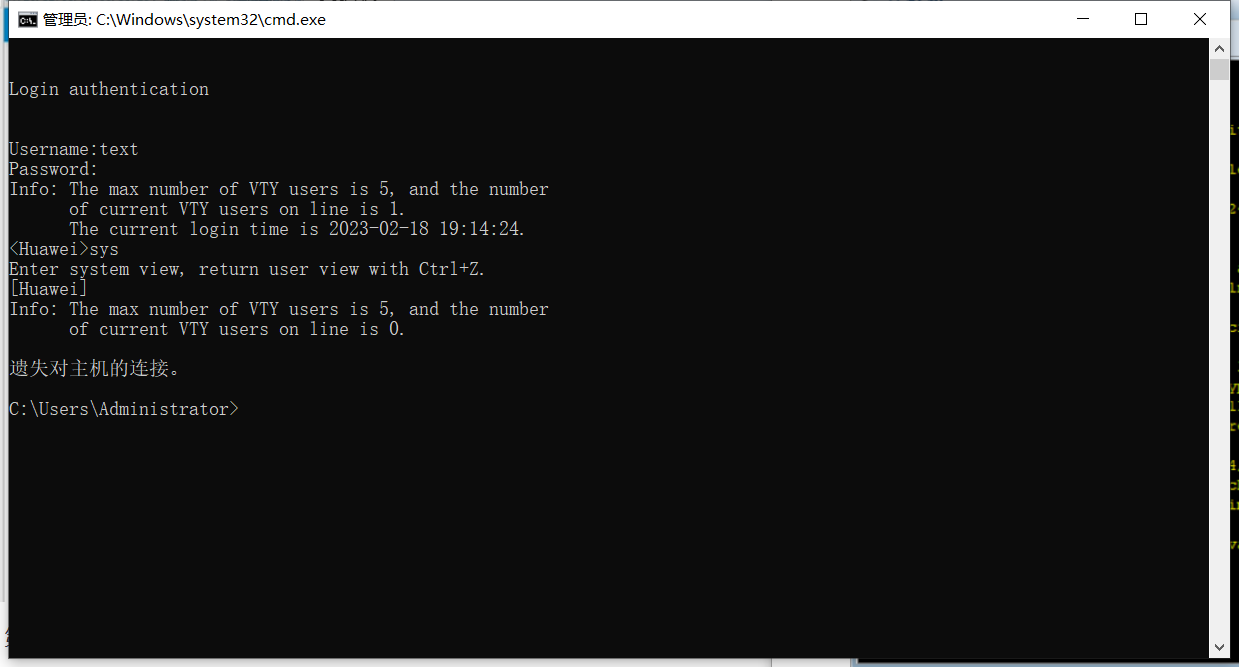秋招面试专栏推荐 :深度学习算法工程师面试问题总结【百面算法工程师】——点击即可跳转
💡💡💡本专栏所有程序均经过测试,可成功执行💡💡💡
专栏目录 :《YOLOv8改进有效涨点》专栏介绍 & 专栏目录 | 目前已有80+篇内容,内含各种Head检测头、损失函数Loss、Backbone、Neck、NMS等创新点改进——点击即可跳转
本篇文章主要分享YOLOv8中网络模型yaml文件,我们一般只知道如何去训练模型,和配置yaml文件,但是对于yaml文件是如何输入到模型里,yaml文件中每句话的内容是什么含义,模型如何将yaml文件解析出来可能是不知道的,这篇文章就给大家分享一下yaml文件的内容含义,在最后打印出详细的网络结构参数以及如何绘制网络结构图。
专栏地址:YOLOv8改进——更新各种有效涨点方法——点击即可跳转 订阅学习不迷路
目录
1. yaml文件的内容解析
1.1 参数配置
1.2 backbone
1.3 head
2. 网络结构打印
3. 网络结构图的绘制
1. yaml文件的内容解析
文件位置:ultralytics/ultralytics/cfg/models/v8/yolov8.yaml,
文件详解:
有些计算方式大家需要提前了解
- 关于GFLOPs的计算感兴趣的同学可以查看:8.13 卷积的memory,params,GFLOPs计算方法
- 关于如何计算卷积后的长和宽:8.3 卷积后图像的长和宽大小的计算方式
# Ultralytics YOLO 🚀, AGPL-3.0 license
# YOLOv8 object detection model with P3-P5 outputs. For Usage examples see https://docs.ultralytics.com/tasks/detect
# Parameters
nc: 80 # 类别数目,nc代表"number of classes",即模型用于检测的对象类别总数。 80就是你所训练的数据的类别数量。由于默认使用COCO数据集,所以这里nc=80;但是这个在训练的时候你不是80个类别这里不修改也无所谓,只需要修改数据集的yaml文件即可。
scales: # 模型复合缩放常数,用于定义模型的不同尺寸和复杂度。即从下面n,s,m,l,x中选择其中一个便可以指定,例如在train.py中直接写 'model=yolov8n.yaml' ,便是指定了yolov8的n模型,如果写'model=yolov8x.yaml',这样指定的就是YOLOv8的x模型,也就是最大的模型。
# [depth, width, max_channels]
n: [0.33, 0.25, 1024] # YOLOv8n:225层, 3157200参数, 3157184梯度, 8.9 GFLOPs
s: [0.33, 0.50, 1024] # YOLOv8s:225层, 11166560参数, 11166544梯度, 28.8 GFLOPs
m: [0.67, 0.75, 768] # YOLOv8m:295层, 25902640参数, 25902624梯度, 79.3 GFLOPs
l: [1.00, 1.00, 512] # YOLOv8l:365层, 43691520参数, 43691504梯度, 165.7 GFLOPs
x: [1.00, 1.25, 512] # YOLOv8x:365层, 68229648参数, 68229632梯度, 258.5 GFLOPs
# YOLOv8.0n backbone 主干网络
backbone:
# [from, repeats, module, args] # from代表来自第几层,-1代表来自上一层,repeats是模块重复的次数,module是模块的名称,args是模块的参数
- [-1, 1, Conv, [64, 3, 2]] # 0-P1/2 第0层,-1代表将上层的输出作为本层的输入。第0层的输入是640*640*3的图像。1代表该模块不重复,Conv代表卷积层,对应的参数:64代表输出通道数,3代表卷积核大小k,2代表stride步长。卷积后输出的特征图尺寸为320*320*64,长宽为初始图片的1/2。
- [-1, 1, Conv, [128, 3, 2]] # 1-P2/4 第1层,本层和上一层是一样的操作(128代表输出通道数,3代表卷积核大小k,2代表stride步长)。卷积后输出的特征图尺寸为160*160*128,长宽为初始图片的1/4
- [-1, 3, C2f, [128, True]] # 第2层,本层是C2f模块,3代表本层重复3次。128代表输出通道数,True表示Bottleneck有shortcut。输出的特征图尺寸为160*160*128。
- [-1, 1, Conv, [256, 3, 2]] # 3-P3/8 第3层,进行卷积操作(256代表输出通道数,3代表卷积核大小k,2代表stride步长),输出特征图尺寸为80*80*256(卷积的参数都没变,所以都是长宽变成原来的1/2,和之前一样),特征图的长宽已经变成初始输入图像的1/8。
- [-1, 6, C2f, [256, True]] # 第4层,本层是C2f模块,可以参考第2层的讲解。6代表本层重复6次。256代表输出通道数,True表示Bottleneck有shortcut。经过这层之后,特征图尺寸依旧是80*80*256。
- [-1, 1, Conv, [512, 3, 2]] # 5-P4/16 第5层,进行卷积操作(512代表输出通道数,3代表卷积核大小k,2代表stride步长),输出特征图尺寸为40*40*512(卷积的参数都没变,所以都是长宽变成原来的1/2,和之前一样),特征图的长宽已经变成输入图像的1/16。
- [-1, 6, C2f, [512, True]] # 第6层,本层是C2f模块,可以参考第2层的讲解。6代表本层重复6次。512代表输出通道数,True表示Bottleneck有shortcut。经过这层之后,特征图尺寸依旧是40*40*512。
- [-1, 1, Conv, [1024, 3, 2]] # 7-P5/32 第7层,进行卷积操作(1024代表输出通道数,3代表卷积核大小k,2代表stride步长),输出特征图尺寸为20*20*1024(卷积的参数都没变,所以都是长宽变成原来的1/2,和之前一样),特征图的长宽已经变成输入图像的1/32。
- [-1, 3, C2f, [1024, True]] #第8层,本层是C2f模块,可以参考第2层的讲解。3代表本层重复3次。1024代表输出通道数,True表示Bottleneck有shortcut。经过这层之后,特征图尺寸依旧是20*20*1024。
- [-1, 1, SPPF, [1024, 5]] # 9 第9层,本层是快速空间金字塔池化层(SPPF)。1024代表输出通道数,5代表池化核大小k。结合模块结构图和代码可以看出,最后concat得到的特征图尺寸是20*20*(512*4),经过一次Conv得到20*20*1024。
# YOLOv8.0n head
head:
- [-1, 1, nn.Upsample, [None, 2, 'nearest']] # 第10层,本层是上采样层。-1代表将上层的输出作为本层的输入。None代表上采样的size=None(输出尺寸)不指定。2代表scale_factor=2,表示输出的尺寸是输入尺寸的2倍。mode=nearest代表使用的上采样算法为最近邻插值算法。经过这层之后,特征图的长和宽变成原来的两倍,通道数不变,所以最终尺寸为40*40*1024。
- [[-1, 6], 1, Concat, [1]] # cat backbone P4 第11层,本层是concat层,[-1, 6]代表将上层和第6层的输出作为本层的输入。[1]代表concat拼接的维度是1。从上面的分析可知,上层的输出尺寸是40*40*1024,第6层的输出是40*40*512,最终本层的输出尺寸为40*40*1536。
- [-1, 3, C2f, [512]] # 12 第12层,本层是C2f模块,可以参考第2层的讲解。3代表本层重复3次。512代表输出通道数。与Backbone中C2f不同的是,此处的C2f的bottleneck模块的shortcut=False。
- [-1, 1, nn.Upsample, [None, 2, 'nearest']] # 第13层,本层也是上采样层(参考第10层)。经过这层之后,特征图的长和宽变成原来的两倍,通道数不变,所以最终尺寸为80*80*512。
- [[-1, 4], 1, Concat, [1]] # cat backbone P3 第14层,本层是concat层,[-1, 4]代表将上层和第4层的输出作为本层的输入。[1]代表concat拼接的维度是1。从上面的分析可知,上层的输出尺寸是80*80*512,第6层的输出是80*80*256,最终本层的输出尺寸为80*80*768。
- [-1, 3, C2f, [256]] # 15 (P3/8-small) 第15层,本层是C2f模块,可以参考第2层的讲解。3代表本层重复3次。256代表输出通道数。经过这层之后,特征图尺寸变为80*80*256,特征图的长宽已经变成输入图像的1/8。
- [-1, 1, Conv, [256, 3, 2]] # 第16层,进行卷积操作(256代表输出通道数,3代表卷积核大小k,2代表stride步长),输出特征图尺寸为40*40*256(卷积的参数都没变,所以都是长宽变成原来的1/2,和之前一样)。
- [[-1, 12], 1, Concat, [1]] # cat head P4 第17层,本层是concat层,[-1, 12]代表将上层和第12层的输出作为本层的输入。[1]代表concat拼接的维度是1。从上面的分析可知,上层的输出尺寸是40*40*256,第12层的输出是40*40*512,最终本层的输出尺寸为40*40*768。
- [-1, 3, C2f, [512]] # 18 (P4/16-medium) 第18层,本层是C2f模块,可以参考第2层的讲解。3代表本层重复3次。512代表输出通道数。经过这层之后,特征图尺寸变为40*40*512,特征图的长宽已经变成输入图像的1/16。
- [-1, 1, Conv, [512, 3, 2]] # 第19层,进行卷积操作(512代表输出通道数,3代表卷积核大小k,2代表stride步长),输出特征图尺寸为20*20*512(卷积的参数都没变,所以都是长宽变成原来的1/2,和之前一样)。
- [[-1, 9], 1, Concat, [1]] # cat head P5 第20层,本层是concat层,[-1, 9]代表将上层和第9层的输出作为本层的输入。[1]代表concat拼接的维度是1。从上面的分析可知,上层的输出尺寸是20*20*512,第9层的输出是20*20*1024,最终本层的输出尺寸为20*20*1536。
- [-1, 3, C2f, [1024]] # 21 (P5/32-large) 第21层,本层是C2f模块,可以参考第2层的讲解。3代表本层重复3次。1024代表输出通道数。经过这层之后,特征图尺寸变为20*20*1024,特征图的长宽已经变成输入图像的1/32。
- [[15, 18, 21], 1, Detect, [nc]] # Detect(P3, P4, P5) 第20层,本层是Detect层,[15, 18, 21]代表将第15、18、21层的输出(分别是80*80*256、40*40*512、20*20*1024)作为本层的输入。nc是数据集的类别数。
1.1 参数配置
# Parameters
nc: 80 # 类别数目,nc代表"number of classes",即模型用于检测的对象类别总数。 80就是你所训练的数据的类别数量。由于默认使用COCO数据集,所以这里nc=80;但是这个在训练的时候你不是80个类别这里不修改也无所谓,只需要修改数据集的yaml文件即可。
scales: # 模型复合缩放常数,用于定义模型的不同尺寸和复杂度。即从下面n,s,m,l,x中选择其中一个便可以指定,例如在train.py中直接写 'model=yolov8n.yaml' ,便是指定了yolov8的n模型,如果写'model=yolov8x.yaml',这样指定的就是YOLOv8的x模型,也就是最大的模型。
# [depth, width, max_channels]
n: [0.33, 0.25, 1024] # YOLOv8n:225层, 3157200参数, 3157184梯度, 8.9 GFLOPs
s: [0.33, 0.50, 1024] # YOLOv8s:225层, 11166560参数, 11166544梯度, 28.8 GFLOPs
m: [0.67, 0.75, 768] # YOLOv8m:295层, 25902640参数, 25902624梯度, 79.3 GFLOPs
l: [1.00, 1.00, 512] # YOLOv8l:365层, 43691520参数, 43691504梯度, 165.7 GFLOPs
x: [1.00, 1.25, 512] # YOLOv8x:365层, 68229648参数, 68229632梯度, 258.5 GFLOPs
[depth, width, max_channels]
depth: 网络的深度,控制子模块的数量
width: 网络的宽度,控制卷积核的数量
max_channels: 最大通道数
scales: # 模型复合缩放常数,用于定义模型的不同尺寸和复杂度。即从下面n,s,m,l,x中选择其中一个便可以指定,例如在train.py中直接写 'model=yolov8n.yaml' ,便是指定了yolov8的n模型,如果写'model=yolov8x.yaml',这样指定的就是YOLOv8的x模型,也就是最大的模型。
然后我们再来看下这句话的意思,
这句话就是说,你可以直接在train.py中这样写
from ultralytics import YOLO
# Load a model
# model = YOLO('yolov8n.yaml') # build a new model from YAML
# model = YOLO('yolov8n.pt') # load a pretrained model (recommended for training)
model = YOLO(r'/projects/ultralytics/ultralytics/cfg/models/v8/yolov8n.yaml') # build from YAML and transfer weights
# Train the model
model.train()有点同学可能会感到困惑:可是文件夹下面并没有yolov8n.yaml这个文件啊,这样不是路径错误吗?其实不然。
在task.py文件中,有这个函数可以提取到n这个scales,将n和yolov8.yaml分开
def guess_model_scale(model_path):
"""
Takes a path to a YOLO model's YAML file as input and extracts the size character of the model's scale. The function
uses regular expression matching to find the pattern of the model scale in the YAML file name, which is denoted by
n, s, m, l, or x. The function returns the size character of the model scale as a string.
Args:
model_path (str | Path): The path to the YOLO model's YAML file.
Returns:
(str): The size character of the model's scale, which can be n, s, m, l, or x.
"""
with contextlib.suppress(AttributeError):
import re
return re.search(r"yolov\d+([nslmx])", Path(model_path).stem).group(1) # n, s, m, l, or x
return ""这句代码用于从一个路径字符串中提取YOLO模型的版本信息。具体来说,它使用正则表达式匹配模型路径字符串中的某一部分并提取其中的一部分内容。
下面逐步解释这句代码的含义:
-
re.search(r"yolov\d+([nslmx])", Path(model_path).stem):-
re.search是 Python 正则表达式模块re中的一个函数,用于在字符串中搜索与正则表达式模式匹配的内容。 -
r"yolov\d+([nslmx])"是一个原始字符串,表示正则表达式模式:-
yolov表示匹配字符串 "yolov"。 -
\d+表示匹配一个或多个数字(\d 表示数字,+ 表示一个或多个)。 -
([nslmx])是一个捕获组,表示匹配单个字符,可以是 n, s, l, m, 或 x 中的任意一个。 -
Path(model_path).stem是将model_path作为路径对象处理,并获取其文件名部分(不包括扩展名)。
-
-
-
.group(1):
group(1) 返回匹配的第一个捕获组的内容,即正则表达式中的 ([nslmx]) 部分。
举例说明
假设 model_path 为 "path/to/yolov8n.pt",则解释如下:
-
Path(model_path).stem得到 "yolov8n"。 -
re.search(r"yolov\d+([nslmx])", "yolov8n")匹配 "yolov8n" 字符串,其中:-
yolov8匹配yolov\d+部分。 -
n匹配([nslmx])部分。
-
-
.group(1)返回捕获组的内容,即 "n"。
因此,这句代码的作用是从 model_path 中提取 YOLO 模型版本的最后一个字符(n, s, l, m, x)。
1.2 backbone

[from, repeats, module, args]
from: 有三种可能的值分别是 -1、具体的数值、list存放数值。
- -1代表此层的输入就是上一层的输出
- 如果是具体的某个数字6则代表本层的输入来自于模型的第6层
- 有的层是list存在两个值可能是多个值,则代表对应两个值的输出为本层的输入,例如concat
repeats: 这个参数是为了、C2f设置的,其他模块用不到,代表着C2f中Bottleneck重复的次数,当我们的模型用到的是3时候,repeats=3那么则代表C2f当中的Bottleneck串行3个。
module:模块类名,通过这个类名在conv.py,block.py和head.py中寻找相应的类,进行模块化的搭建网络。
args:以conv[64, 3, 2]为例,分别对应[channel, kernel, stride] 。channel是输出feature map的通道数,kernel是卷积核的个数, stride是卷积核移动步幅。此处代表输入到对应模块的参数,此处和parse_model函数中的定义方法有关,对于C2f来说传入的参数->第一个参数是上一个模型的输出通道数,第二个参数就是args的第一个参数,然后以此类推。
以C2f[128,true]为例,128是输出feature map的通道数,True代表Bottleneck模块中的shortcut=True,没有写代表False。
以SPPF[1024,5]为例,1024是输出feature map的通道数,5是SPPF模块中池化核的尺寸。
以nn.upsample为例,None表示不指定输出尺寸,2表示输出尺寸为输入尺寸的2倍,“nearest”表示上采样差值方式为最近邻差值。
1.3 head

head用于将主干网络(backbone)的特征图(feature maps)转化为目标检测的输出结果,head部分定义了模型的检测头,即用于最终目标检测的网络结构。头部网络的主要作用是进行目标分类和定位。它根据颈部网络提供的融合特征图,对每个特征点进行分类(目标类别预测)和定位(边界框预测)。
2. 网络结构打印
在yolov8的文件夹下新建info.py,然后粘贴下面的代码
from ultralytics import YOLO
# 加载训练好的模型或者网络结构配置文件
# model = YOLO('ultralytics/run/best.pt')
model = YOLO('ultralytics/cfg/models/v8/yolov8n.yaml')
# 打印模型参数信息
print(model.info())
# 打印模型参数详细信息
print(model.info(detailed=True))
# 打印模型参数信息
print(model.info()) 输出内容如下:
只打印了层数,参数,梯度和GFLOPs
YOLOv8 summary: 225 layers, 3,157,200 parameters, 3,157,184 gradients 8.9GFLOPs
(225, 3157200, 3157184, 8.9GFLOPs)# 打印模型参数详细信息
print(model.info(detailed=True)) 输出内容如下:
打印出了模型每一层网络结构的名字、参数量以及该层的结构形状。
layer name gradient parameters shape mu sigma
0 model.0.conv.weight True 432 [16, 3, 3, 3] 0.0087 0.113 torch.float32
1 model.0.bn.weight True 16 [16] 1 0 torch.float32
2 model.0.bn.bias True 16 [16] 0 0 torch.float32
3 model.1.conv.weight True 4608 [32, 16, 3, 3] 7.56e-05 0.0485 torch.float32
4 model.1.bn.weight True 32 [32] 1 0 torch.float32
5 model.1.bn.bias True 32 [32] 0 0 torch.float32
6 model.2.cv1.conv.weight True 1024 [32, 32, 1, 1] 0.00353 0.102 torch.float32
7 model.2.cv1.bn.weight True 32 [32] 1 0 torch.float32
8 model.2.cv1.bn.bias True 32 [32] 0 0 torch.float32
9 model.2.cv2.conv.weight True 1536 [32, 48, 1, 1] 0.00545 0.0834 torch.float32
10 model.2.cv2.bn.weight True 32 [32] 1 0 torch.float32
11 model.2.cv2.bn.bias True 32 [32] 0 0 torch.float32
12 model.2.m.0.cv1.conv.weight True 2304 [16, 16, 3, 3] 0.000192 0.0481 torch.float32
13 model.2.m.0.cv1.bn.weight True 16 [16] 1 0 torch.float32
14 model.2.m.0.cv1.bn.bias True 16 [16] 0 0 torch.float32
15 model.2.m.0.cv2.conv.weight True 2304 [16, 16, 3, 3] 7.72e-06 0.0489 torch.float32
16 model.2.m.0.cv2.bn.weight True 16 [16] 1 0 torch.float32
17 model.2.m.0.cv2.bn.bias True 16 [16] 0 0 torch.float32
18 model.3.conv.weight True 18432 [64, 32, 3, 3] -0.00032 0.0341 torch.float32
19 model.3.bn.weight True 64 [64] 1 0 torch.float32
20 model.3.bn.bias True 64 [64] 0 0 torch.float32
21 model.4.cv1.conv.weight True 4096 [64, 64, 1, 1] 0.000252 0.072 torch.float32
22 model.4.cv1.bn.weight True 64 [64] 1 0 torch.float32
23 model.4.cv1.bn.bias True 64 [64] 0 0 torch.float32
24 model.4.cv2.conv.weight True 8192 [64, 128, 1, 1] 0.000322 0.0511 torch.float32
25 model.4.cv2.bn.weight True 64 [64] 1 0 torch.float32
26 model.4.cv2.bn.bias True 64 [64] 0 0 torch.float32
27 model.4.m.0.cv1.conv.weight True 9216 [32, 32, 3, 3] 0.000172 0.0344 torch.float32
28 model.4.m.0.cv1.bn.weight True 32 [32] 1 0 torch.float32
29 model.4.m.0.cv1.bn.bias True 32 [32] 0 0 torch.float32
30 model.4.m.0.cv2.conv.weight True 9216 [32, 32, 3, 3] -0.000275 0.034 torch.float32
31 model.4.m.0.cv2.bn.weight True 32 [32] 1 0 torch.float32
32 model.4.m.0.cv2.bn.bias True 32 [32] 0 0 torch.float32
33 model.4.m.1.cv1.conv.weight True 9216 [32, 32, 3, 3] -0.000292 0.0342 torch.float32
34 model.4.m.1.cv1.bn.weight True 32 [32] 1 0 torch.float32
35 model.4.m.1.cv1.bn.bias True 32 [32] 0 0 torch.float32
36 model.4.m.1.cv2.conv.weight True 9216 [32, 32, 3, 3] -7.28e-05 0.0343 torch.float32
37 model.4.m.1.cv2.bn.weight True 32 [32] 1 0 torch.float32
38 model.4.m.1.cv2.bn.bias True 32 [32] 0 0 torch.float32
39 model.5.conv.weight True 73728 [128, 64, 3, 3] 9.28e-05 0.024 torch.float32
40 model.5.bn.weight True 128 [128] 1 0 torch.float32
41 model.5.bn.bias True 128 [128] 0 0 torch.float32
42 model.6.cv1.conv.weight True 16384 [128, 128, 1, 1] 0.000167 0.051 torch.float32
43 model.6.cv1.bn.weight True 128 [128] 1 0 torch.float32
44 model.6.cv1.bn.bias True 128 [128] 0 0 torch.float32
45 model.6.cv2.conv.weight True 32768 [128, 256, 1, 1] 8.12e-05 0.036 torch.float32
46 model.6.cv2.bn.weight True 128 [128] 1 0 torch.float32
47 model.6.cv2.bn.bias True 128 [128] 0 0 torch.float32
48 model.6.m.0.cv1.conv.weight True 36864 [64, 64, 3, 3] -0.000144 0.024 torch.float32
49 model.6.m.0.cv1.bn.weight True 64 [64] 1 0 torch.float32
50 model.6.m.0.cv1.bn.bias True 64 [64] 0 0 torch.float32
51 model.6.m.0.cv2.conv.weight True 36864 [64, 64, 3, 3] -0.000178 0.0241 torch.float32
52 model.6.m.0.cv2.bn.weight True 64 [64] 1 0 torch.float32
53 model.6.m.0.cv2.bn.bias True 64 [64] 0 0 torch.float32
54 model.6.m.1.cv1.conv.weight True 36864 [64, 64, 3, 3] -9.93e-05 0.024 torch.float32
55 model.6.m.1.cv1.bn.weight True 64 [64] 1 0 torch.float32
56 model.6.m.1.cv1.bn.bias True 64 [64] 0 0 torch.float32
57 model.6.m.1.cv2.conv.weight True 36864 [64, 64, 3, 3] 7.46e-05 0.0241 torch.float32
58 model.6.m.1.cv2.bn.weight True 64 [64] 1 0 torch.float32
59 model.6.m.1.cv2.bn.bias True 64 [64] 0 0 torch.float32
60 model.7.conv.weight True 294912 [256, 128, 3, 3] 1.19e-05 0.017 torch.float32
61 model.7.bn.weight True 256 [256] 1 0 torch.float32
62 model.7.bn.bias True 256 [256] 0 0 torch.float32
63 model.8.cv1.conv.weight True 65536 [256, 256, 1, 1] -1.78e-05 0.036 torch.float32
64 model.8.cv1.bn.weight True 256 [256] 1 0 torch.float32
65 model.8.cv1.bn.bias True 256 [256] 0 0 torch.float32
66 model.8.cv2.conv.weight True 98304 [256, 384, 1, 1] -5.52e-05 0.0294 torch.float32
67 model.8.cv2.bn.weight True 256 [256] 1 0 torch.float32
68 model.8.cv2.bn.bias True 256 [256] 0 0 torch.float32
69 model.8.m.0.cv1.conv.weight True 147456 [128, 128, 3, 3] 7.66e-05 0.017 torch.float32
70 model.8.m.0.cv1.bn.weight True 128 [128] 1 0 torch.float32
71 model.8.m.0.cv1.bn.bias True 128 [128] 0 0 torch.float32
72 model.8.m.0.cv2.conv.weight True 147456 [128, 128, 3, 3] 8.7e-07 0.017 torch.float32
73 model.8.m.0.cv2.bn.weight True 128 [128] 1 0 torch.float32
74 model.8.m.0.cv2.bn.bias True 128 [128] 0 0 torch.float32
75 model.9.cv1.conv.weight True 32768 [128, 256, 1, 1] -0.000411 0.0361 torch.float32
76 model.9.cv1.bn.weight True 128 [128] 1 0 torch.float32
77 model.9.cv1.bn.bias True 128 [128] 0 0 torch.float32
78 model.9.cv2.conv.weight True 131072 [256, 512, 1, 1] 0.000127 0.0255 torch.float32
79 model.9.cv2.bn.weight True 256 [256] 1 0 torch.float32
80 model.9.cv2.bn.bias True 256 [256] 0 0 torch.float32
81 model.12.cv1.conv.weight True 49152 [128, 384, 1, 1] -0.000128 0.0295 torch.float32
82 model.12.cv1.bn.weight True 128 [128] 1 0 torch.float32
83 model.12.cv1.bn.bias True 128 [128] 0 0 torch.float32
84 model.12.cv2.conv.weight True 24576 [128, 192, 1, 1] -0.000642 0.0418 torch.float32
85 model.12.cv2.bn.weight True 128 [128] 1 0 torch.float32
86 model.12.cv2.bn.bias True 128 [128] 0 0 torch.float32
87 model.12.m.0.cv1.conv.weight True 36864 [64, 64, 3, 3] 1.28e-05 0.0241 torch.float32
88 model.12.m.0.cv1.bn.weight True 64 [64] 1 0 torch.float32
89 model.12.m.0.cv1.bn.bias True 64 [64] 0 0 torch.float32
90 model.12.m.0.cv2.conv.weight True 36864 [64, 64, 3, 3] -0.000192 0.0241 torch.float32
91 model.12.m.0.cv2.bn.weight True 64 [64] 1 0 torch.float32
92 model.12.m.0.cv2.bn.bias True 64 [64] 0 0 torch.float32
93 model.15.cv1.conv.weight True 12288 [64, 192, 1, 1] -0.000297 0.0419 torch.float32
94 model.15.cv1.bn.weight True 64 [64] 1 0 torch.float32
95 model.15.cv1.bn.bias True 64 [64] 0 0 torch.float32
96 model.15.cv2.conv.weight True 6144 [64, 96, 1, 1] 0.000114 0.059 torch.float32
97 model.15.cv2.bn.weight True 64 [64] 1 0 torch.float32
98 model.15.cv2.bn.bias True 64 [64] 0 0 torch.float32
99 model.15.m.0.cv1.conv.weight True 9216 [32, 32, 3, 3] -0.000316 0.034 torch.float32
100 model.15.m.0.cv1.bn.weight True 32 [32] 1 0 torch.float32
101 model.15.m.0.cv1.bn.bias True 32 [32] 0 0 torch.float32
102 model.15.m.0.cv2.conv.weight True 9216 [32, 32, 3, 3] 0.000419 0.0341 torch.float32
103 model.15.m.0.cv2.bn.weight True 32 [32] 1 0 torch.float32
104 model.15.m.0.cv2.bn.bias True 32 [32] 0 0 torch.float32
105 model.16.conv.weight True 36864 [64, 64, 3, 3] 9.78e-05 0.0242 torch.float32
106 model.16.bn.weight True 64 [64] 1 0 torch.float32
107 model.16.bn.bias True 64 [64] 0 0 torch.float32
108 model.18.cv1.conv.weight True 24576 [128, 192, 1, 1] 0.00016 0.0417 torch.float32
109 model.18.cv1.bn.weight True 128 [128] 1 0 torch.float32
110 model.18.cv1.bn.bias True 128 [128] 0 0 torch.float32
111 model.18.cv2.conv.weight True 24576 [128, 192, 1, 1] 0.00015 0.0416 torch.float32
112 model.18.cv2.bn.weight True 128 [128] 1 0 torch.float32
113 model.18.cv2.bn.bias True 128 [128] 0 0 torch.float32
114 model.18.m.0.cv1.conv.weight True 36864 [64, 64, 3, 3] 8.61e-05 0.024 torch.float32
115 model.18.m.0.cv1.bn.weight True 64 [64] 1 0 torch.float32
116 model.18.m.0.cv1.bn.bias True 64 [64] 0 0 torch.float32
117 model.18.m.0.cv2.conv.weight True 36864 [64, 64, 3, 3] 0.000194 0.024 torch.float32
118 model.18.m.0.cv2.bn.weight True 64 [64] 1 0 torch.float32
119 model.18.m.0.cv2.bn.bias True 64 [64] 0 0 torch.float32
120 model.19.conv.weight True 147456 [128, 128, 3, 3] -3.91e-05 0.017 torch.float32
121 model.19.bn.weight True 128 [128] 1 0 torch.float32
122 model.19.bn.bias True 128 [128] 0 0 torch.float32
123 model.21.cv1.conv.weight True 98304 [256, 384, 1, 1] -0.000318 0.0295 torch.float32
124 model.21.cv1.bn.weight True 256 [256] 1 0 torch.float32
125 model.21.cv1.bn.bias True 256 [256] 0 0 torch.float32
126 model.21.cv2.conv.weight True 98304 [256, 384, 1, 1] 1.61e-05 0.0295 torch.float32
127 model.21.cv2.bn.weight True 256 [256] 1 0 torch.float32
128 model.21.cv2.bn.bias True 256 [256] 0 0 torch.float32
129 model.21.m.0.cv1.conv.weight True 147456 [128, 128, 3, 3] 7.26e-05 0.017 torch.float32
130 model.21.m.0.cv1.bn.weight True 128 [128] 1 0 torch.float32
131 model.21.m.0.cv1.bn.bias True 128 [128] 0 0 torch.float32
132 model.21.m.0.cv2.conv.weight True 147456 [128, 128, 3, 3] 4.85e-05 0.017 torch.float32
133 model.21.m.0.cv2.bn.weight True 128 [128] 1 0 torch.float32
134 model.21.m.0.cv2.bn.bias True 128 [128] 0 0 torch.float32
135 model.22.cv2.0.0.conv.weight True 36864 [64, 64, 3, 3] -0.000168 0.0241 torch.float32
136 model.22.cv2.0.0.bn.weight True 64 [64] 1 0 torch.float32
137 model.22.cv2.0.0.bn.bias True 64 [64] 0 0 torch.float32
138 model.22.cv2.0.1.conv.weight True 36864 [64, 64, 3, 3] 0.00011 0.0241 torch.float32
139 model.22.cv2.0.1.bn.weight True 64 [64] 1 0 torch.float32
140 model.22.cv2.0.1.bn.bias True 64 [64] 0 0 torch.float32
141 model.22.cv2.0.2.weight True 4096 [64, 64, 1, 1] -0.00119 0.0722 torch.float32
142 model.22.cv2.0.2.bias True 64 [64] 1 0 torch.float32
143 model.22.cv2.1.0.conv.weight True 73728 [64, 128, 3, 3] 6.97e-05 0.017 torch.float32
144 model.22.cv2.1.0.bn.weight True 64 [64] 1 0 torch.float32
145 model.22.cv2.1.0.bn.bias True 64 [64] 0 0 torch.float32
146 model.22.cv2.1.1.conv.weight True 36864 [64, 64, 3, 3] -0.000177 0.024 torch.float32
147 model.22.cv2.1.1.bn.weight True 64 [64] 1 0 torch.float32
148 model.22.cv2.1.1.bn.bias True 64 [64] 0 0 torch.float32
149 model.22.cv2.1.2.weight True 4096 [64, 64, 1, 1] -0.000289 0.0721 torch.float32
150 model.22.cv2.1.2.bias True 64 [64] 1 0 torch.float32
151 model.22.cv2.2.0.conv.weight True 147456 [64, 256, 3, 3] 1.4e-05 0.012 torch.float32
152 model.22.cv2.2.0.bn.weight True 64 [64] 1 0 torch.float32
153 model.22.cv2.2.0.bn.bias True 64 [64] 0 0 torch.float32
154 model.22.cv2.2.1.conv.weight True 36864 [64, 64, 3, 3] -0.000207 0.024 torch.float32
155 model.22.cv2.2.1.bn.weight True 64 [64] 1 0 torch.float32
156 model.22.cv2.2.1.bn.bias True 64 [64] 0 0 torch.float32
157 model.22.cv2.2.2.weight True 4096 [64, 64, 1, 1] 0.000311 0.0727 torch.float32
158 model.22.cv2.2.2.bias True 64 [64] 1 0 torch.float32
159 model.22.cv3.0.0.conv.weight True 46080 [80, 64, 3, 3] 5.27e-05 0.0241 torch.float32
160 model.22.cv3.0.0.bn.weight True 80 [80] 1 0 torch.float32
161 model.22.cv3.0.0.bn.bias True 80 [80] 0 0 torch.float32
162 model.22.cv3.0.1.conv.weight True 57600 [80, 80, 3, 3] -5.35e-05 0.0216 torch.float32
163 model.22.cv3.0.1.bn.weight True 80 [80] 1 0 torch.float32
164 model.22.cv3.0.1.bn.bias True 80 [80] 0 0 torch.float32
165 model.22.cv3.0.2.weight True 6400 [80, 80, 1, 1] -0.000259 0.0642 torch.float32
166 model.22.cv3.0.2.bias True 80 [80] -11.5 1.92e-06 torch.float32
167 model.22.cv3.1.0.conv.weight True 92160 [80, 128, 3, 3] -6.1e-05 0.017 torch.float32
168 model.22.cv3.1.0.bn.weight True 80 [80] 1 0 torch.float32
169 model.22.cv3.1.0.bn.bias True 80 [80] 0 0 torch.float32
170 model.22.cv3.1.1.conv.weight True 57600 [80, 80, 3, 3] 0.000153 0.0215 torch.float32
171 model.22.cv3.1.1.bn.weight True 80 [80] 1 0 torch.float32
172 model.22.cv3.1.1.bn.bias True 80 [80] 0 0 torch.float32
173 model.22.cv3.1.2.weight True 6400 [80, 80, 1, 1] -0.000754 0.064 torch.float32
174 model.22.cv3.1.2.bias True 80 [80] -10.2 0 torch.float32
175 model.22.cv3.2.0.conv.weight True 184320 [80, 256, 3, 3] 3.96e-05 0.012 torch.float32
176 model.22.cv3.2.0.bn.weight True 80 [80] 1 0 torch.float32
177 model.22.cv3.2.0.bn.bias True 80 [80] 0 0 torch.float32
178 model.22.cv3.2.1.conv.weight True 57600 [80, 80, 3, 3] -3.82e-05 0.0215 torch.float32
179 model.22.cv3.2.1.bn.weight True 80 [80] 1 0 torch.float32
180 model.22.cv3.2.1.bn.bias True 80 [80] 0 0 torch.float32
181 model.22.cv3.2.2.weight True 6400 [80, 80, 1, 1] 5.84e-05 0.0644 torch.float32
182 model.22.cv3.2.2.bias True 80 [80] -8.76 0 torch.float32
183 model.22.dfl.conv.weight False 16 [1, 16, 1, 1] 7.5 4.76 torch.float32
YOLOv8 summary: 225 layers, 3,157,200 parameters, 3,157,184 gradients, 8.9GFLOPs
(225, 3157200, 3157184, 8.9)3. 网络结构图的绘制
绘制网络结构的整体部分主要是参考yaml文件,而详细的部分需要去看每个模块的代码实现。
给大家推荐一个绘制网络结构图的网站:(diagrams.net)
画图的时候我们先要看如何输入,我们在yaml文件的这里看到输入是一张640*640*3的图像,所以从上面开始是input一个图像,接下来是两个Conv,

然后接下来是C2f模块,

这样一直画到SPPF结构,画head,【我这里是画的四个检测头,原理和三个检测头是一样的】

然后接下来我们连接一下每个模块之间的线,根据yaml文件连线即可

详细的结构图绘制等我有时间了会出视频,文字可能不是很直观。
我的yaml文件
# Ultralytics YOLO 🚀, AGPL-3.0 license
# YOLOv8 object detection model with P2-P5 outputs. For Usage examples see https://docs.ultralytics.com/tasks/detect
# Parameters
nc: 80 # number of classes
scales: # model compound scaling constants, i.e. 'model=yolov8n.yaml' will call yolov8.yaml with scale 'n'
# [depth, width, max_channels]
n: [0.33, 0.25, 1024]
s: [0.33, 0.50, 1024]
m: [0.67, 0.75, 768]
l: [1.00, 1.00, 512]
x: [1.00, 1.25, 512]
# YOLOv8.0 backbone
backbone:
# [from, repeats, module, args]
- [-1, 1, Conv, [64, 3, 2]] # 0-P1/2
- [-1, 1, Conv, [128, 3, 2]] # 1-P2/4
- [-1, 3, C2f, [128, True]]
- [-1, 1, Conv, [256, 3, 2]] # 3-P3/8
- [-1, 6, C2f, [256, True]]
- [-1, 1, Conv, [512, 3, 2]] # 5-P4/16
- [-1, 6, C2f, [512, True]]
- [-1, 1, Conv, [1024, 3, 2]] # 7-P5/32
- [-1, 3, C2f, [1024, True]]
- [-1, 1, SPPF, [1024, 5]] # 9
# YOLOv8.0-p2 head
head:
- [-1, 1, nn.Upsample, [None, 2, "nearest"]]
- [[-1, 6], 1, Concat, [1]] # cat backbone P4
- [-1, 3, C2f, [512]] # 12
- [-1, 1, nn.Upsample, [None, 2, "nearest"]]
- [[-1, 4], 1, Concat, [1]] # cat backbone P3
- [-1, 3, C2f, [256]] # 15 (P3/8-small)
- [-1, 1, nn.Upsample, [None, 2, "nearest"]]
- [[-1, 2], 1, Concat, [1]] # cat backbone P2
- [-1, 3, C2f, [128]] # 18 (P2/4-xsmall)
- [-1, 1, Conv, [128, 3, 2]]
- [[-1, 15], 1, Concat, [1]] # cat head P3
- [-1, 3, C2f, [256]] # 21 (P3/8-small)
- [-1, 1, Conv, [256, 3, 2]]
- [[-1, 12], 1, Concat, [1]] # cat head P4
- [-1, 3, C2f, [512]] # 24 (P4/16-medium)
- [-1, 1, Conv, [512, 3, 2]]
- [[-1, 9], 1, Concat, [1]] # cat head P5
- [-1, 3, C2f, [1024]] # 27 (P5/32-large)
- [[18, 21, 24, 27], 1, Detect, [nc]] # Detect(P2, P3, P4, P5)


















